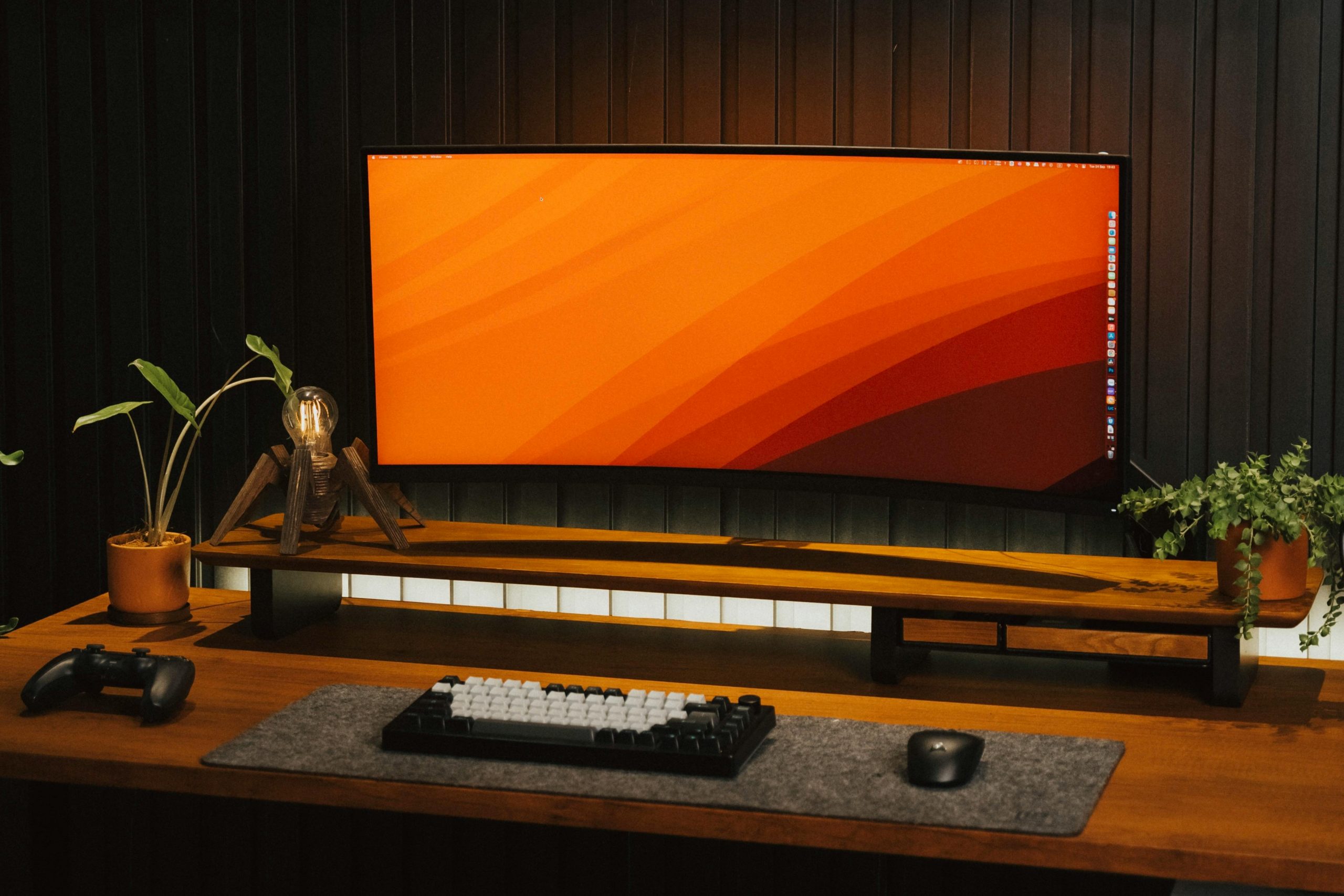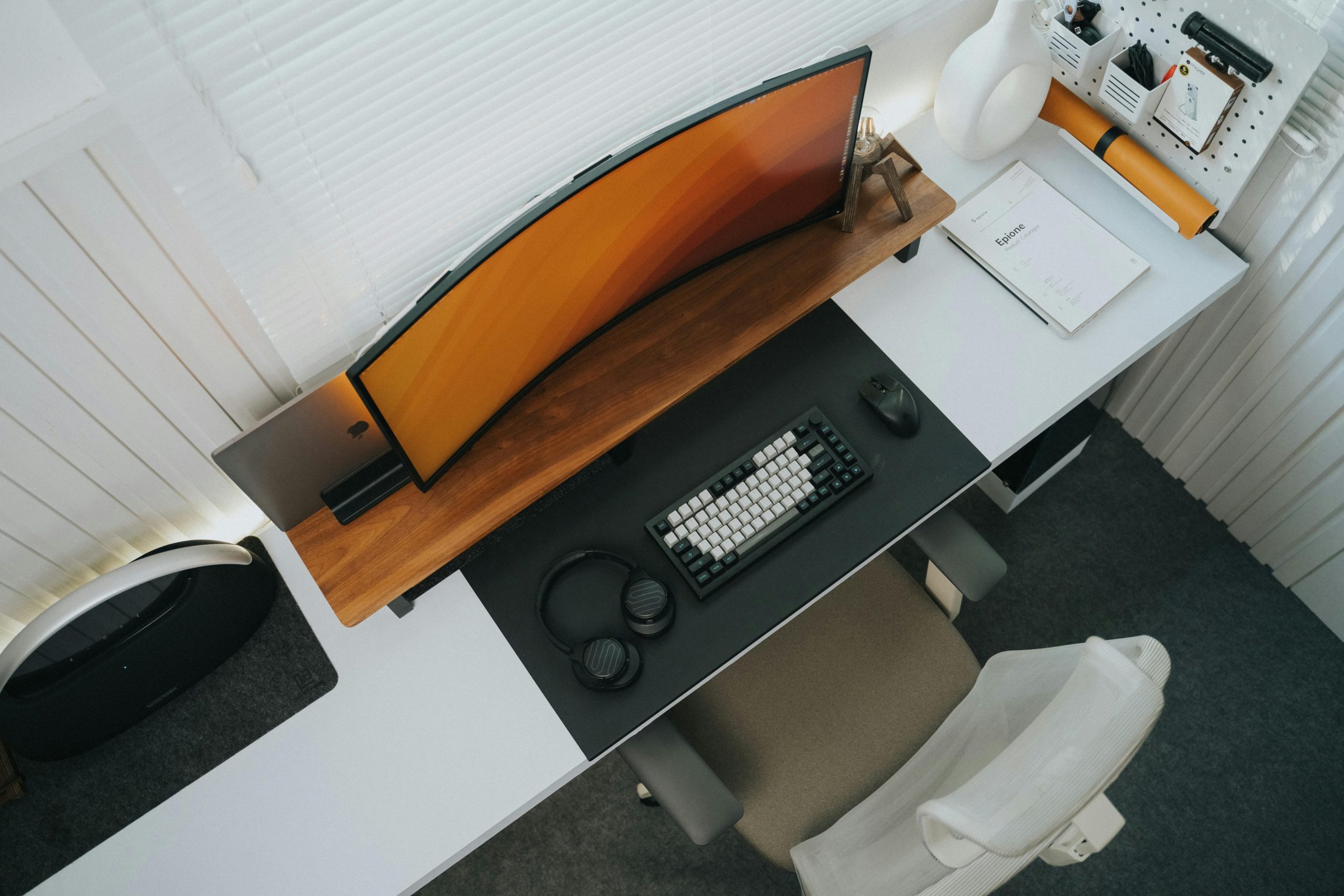Curved monitors have become more common in offices, gaming setups, and creative studios. But are curved monitors better than flat ones? The answer depends on how you use your computer, what features matter most to you, and what you want from your screen.
This guide breaks down the pros and cons of curved monitors, who benefits most from using them, and whether one is the right choice for your setup.
What Is a Curved Monitor?

A curved monitor has a screen that gently curves inward. The idea behind the curve is to mimic the way your eyes naturally view the world. The curve brings the edges of the screen slightly closer to your eyes, creating a more “wrapped” or immersive view.
The curve is measured in terms like 1800R, 1500R, or 1000R. The smaller the number, the more pronounced the curve. For example:
- 1800R = softer curve
- 1000R = tighter curve, more immersive
These screens can come in many sizes, but they’re usually 27 inches or larger, and often ultrawide.
Benefits of Curved Monitors
Curved monitors offer several unique advantages that appeal to gamers, creatives, and everyday users. Here’s a deeper look into why more people are choosing curved displays for their setups:
- More Immersive Experience
The most talked-about benefit of curved monitors is the immersive feel they provide. The curved design mimics how your eyes naturally see the world—wider and slightly rounded. This creates a sense of depth and draws you into the screen.
- Great for gaming, especially first-person or racing games
- Makes movies feel more cinematic
- Feels like a mini-theater at your desk
Ultrawide curved monitors enhance this effect even more by expanding your view horizontally, giving you more room to see what’s happening without needing a second screen.
- Less Eye Strain
Flat screens can force your eyes to constantly shift focus, especially when viewing large monitors or sitting close. Curved monitors, however, follow the natural curvature of your eyes.
- Your eyes stay at a more consistent focus level
- Less side-to-side head movement is needed
- Ideal for long hours of work or gaming
Studies have suggested that this design helps reduce visual fatigue, especially in setups where you’re using the screen for multiple hours at a time.
- Wider Field of View
Curved monitors can offer a wider field of view than similarly sized flat screens. The curve helps keep the edges of the screen angled slightly toward you, making it easier to see everything on display without turning your head.
- Improves productivity when editing videos or managing large spreadsheets
- Lets gamers see more of the game world without moving the mouse or camera
- Makes multitasking with side-by-side windows more natural
This added horizontal space helps users work more efficiently and enjoy a more panoramic visual experience.
- Reduced Glare (In Certain Conditions)
Unlike flat monitors that reflect light directly back at you, curved screens scatter reflected light at an angle. This means you may notice fewer bright spots or distractions when working under ceiling lights or near windows.
- Reduces harsh reflections when set up correctly
- Best used in controlled lighting environments
- May require some trial-and-error placement to find the “sweet spot”
Keep in mind that glare reduction depends heavily on your room’s lighting and where you position the monitor.
- Sleek & Modern Look
Aside from functionality, curved monitors offer visual appeal. Their smooth arcs and futuristic design can elevate the look of any workspace or gaming station.
- Looks stylish and high-end
- Matches well with modern desks and LED lighting setups
- Often comes with thinner bezels, giving it a premium appearance
Whether you’re building a gaming rig or a professional office setup, a curved monitor adds a touch of sophistication and uniqueness.
- Better Multi-Monitor Setup (for Curved Ultrawide)
While flat monitors often require two or more screens for multitasking, an ultrawide curved monitor can offer the same or more screen space without a distracting gap in the middle.
- Eliminates bezel interruptions in multi-monitor setups
- Provides a seamless viewing experience for stock trading, coding, or content creation
- Curved shape helps you stay visually engaged across a wider workspace
This can simplify your setup, reduce cables, and minimize desk clutter while still giving you all the screen real estate you need.
Downsides of Curved Monitors

While curved monitors offer unique advantages, they’re not the right fit for everyone. Here are some potential drawbacks to consider before making a purchase:
- Higher Price
One of the most noticeable downsides is the cost. Curved monitors tend to be more expensive than comparable flat models.
- Expect to pay more for the same resolution and screen size
- Ultrawide and high-refresh-rate versions can be especially pricey
- Budget shoppers may find better value in flat monitors
The premium pricing is largely due to the specialized screen design and added manufacturing costs.
- Not Ideal for All Tasks
If your work involves precision or straight-line visuals, a curved monitor might not be the best choice. The curvature can slightly distort lines, especially at the edges.
Not recommended for:
- Architecture or CAD software
- Engineering and technical drawing
- Detailed graphic design or image editing
- Spreadsheets viewed off-center
In these cases, even a slight distortion could affect accuracy. Flat monitors provide a more consistent display for exacting tasks.
- Requires More Desk Space
Curved monitors, especially larger or ultrawide versions, demand more physical room. Their shape pushes the sides farther forward than flat monitors of the same width.
- A deeper desk is often needed to accommodate the curve
- Wall mounting can be tricky due to the screen shape
- Some setups may feel cramped if space is limited
If you have a small or shallow desk, be sure to measure carefully before buying.
- Poor Viewing Angles for Groups
Curved monitors are designed to be viewed from the center. If you’re not in that sweet spot, the picture may appear warped, dim, or distorted.
- Not great for screen sharing or collaborative work
- Guests or coworkers may have a hard time seeing clearly
- Less effective for watching movies with multiple people
This makes curved monitors less ideal in shared office spaces or environments where collaboration is frequent.
- Mixed Benefits in Smaller Sizes
The curved effect is most noticeable and effective on larger screens—typically 27 inches or more.
- On 24-inch monitors or smaller, the curve may feel unnecessary
- You won’t gain much immersive benefit at that size
- It could even feel distracting if you’re not used to the shape
If you’re buying a monitor on the smaller side, a flat screen may offer a better overall experience for less money.
Are Curved Monitors Better for Gaming?
Yes, for immersive gaming. Gamers often prefer curved monitors because they create a deeper sense of being “in the game.” The curve helps you focus on the action and take in more of the screen without moving your head.
Best games for curved monitors:
- First-person shooters
- Racing games
- Open-world adventures
- Flight simulators
However, competitive gamers may prefer flat high-refresh-rate monitors for quicker response times and easier aim tracking.
Are Curved Monitors Better for Work?
It depends on the work you do.
Great for:
- Multitasking – Ultrawide curved monitors can replace dual-monitor setups
- Video editing – More screen space to stretch timelines
- Programming – View multiple windows or lines of code side by side
- Financial work – View large spreadsheets without scrolling
Not great for:
- Graphic design – Potential distortion of straight lines
- Collaborative work – Not ideal for sharing your screen in person
Are Curved Monitors Better for Watching Movies?
If you enjoy watching movies on your monitor, a curved screen can enhance the viewing experience, especially if:
- The monitor is ultrawide (21:9 aspect ratio)
- You sit directly in front of it
- You like immersive or cinematic scenes
You’ll feel more drawn into the movie. However, if you’re sharing the screen with others, flat might be better due to better viewing angles.
Flat vs. Curved Monitors: Key Differences
If you’re trying to choose between a flat and a curved monitor, consider the following points. Each style has its strengths depending on your needs.
- Price: Flat monitors are usually more affordable. Curved models tend to cost more, especially at larger sizes or higher resolutions.
- Immersion: Flat screens offer a standard viewing experience. Curved monitors, on the other hand, provide a more immersive feel by wrapping the screen slightly around your field of view.
- Eye Strain: Flat monitors offer average comfort, but curved monitors may help reduce eye strain by matching the natural curvature of your vision.
- Space Needs: Flat monitors typically take up less desk space. Curved screens, especially ultrawide models, require deeper desks and more room.
- Viewing Angles: Flat monitors are better for group viewing since they offer consistent image quality from more angles. Curved monitors work best when viewed straight-on and are ideal for solo use.
- Accuracy for Design Work: Flat monitors provide high accuracy for tasks that involve straight lines and symmetry. Curved monitors can slightly distort images, which may be a problem for graphic designers or engineers.
- Gaming Experience: Both styles work well, but curved monitors are often preferred by gamers for a more immersive experience—especially in racing, flight, or first-person shooter games.
- Best Monitor Size: Flat monitors are available in any size and work well even at smaller dimensions.
Curved monitors are most effective at 27 inches or larger, where the curve can be fully appreciated.
Tips for Choosing a Curved Monitor
If you’re thinking about making the switch, here are some tips:
- Go Big or Go Home
Look for screens 27 inches or larger to really notice the curve.
- Know the Radius
- 1800R or 1500R = subtle curve
- 1000R = tight, immersive curve
Lower numbers give a deeper curve.
- Consider Ultrawide
Ultrawide curved monitors (21:9) are ideal for multitasking, editing, and immersive games.
- Check Your Desk Size
Measure your workspace. Make sure your desk is deep enough to fit the screen at the right distance.
- Prioritize Your Use Case
Choose a monitor that fits how you spend most of your screen time—whether it’s work, play, or a little of both.
So, Are Curved Monitors Better?
Curved monitors are better for some users, not all.
They offer a better experience for gamers, video editors, multitaskers, and movie lovers. But they may not be ideal for designers, precise detail work, or people with limited space.
If you’re asking “are curved monitors better” and you mostly work alone, want to reduce eye strain, and love immersive visuals, the answer is yes—they could be a great fit for you.
But if you’re doing detailed design, on a tight budget, or often share your screen with others, a flat monitor might still be the smarter choice.